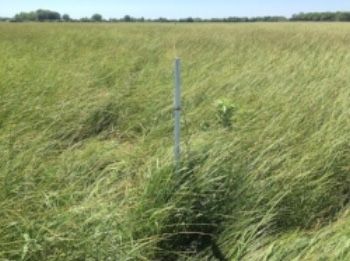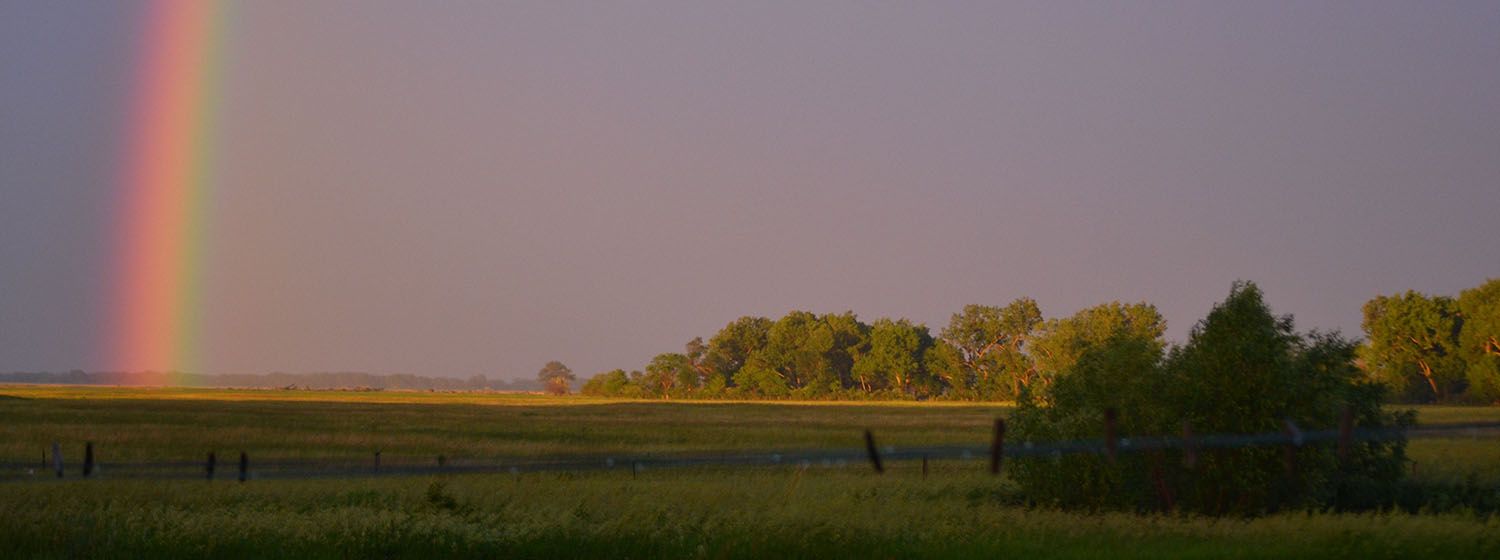The Platte River extends the tallgrass prairie ecosystem west into the drier mixed-grass ecoregion of central Nebraska. Mormon and Shoemaker Islands, totaling 2,025 hectares, together constitute the largest contiguous expanse of lowland tallgrass prairie and wet meadow habitat remaining in the central Platte River Valley.
In this relatively flat yet undulating landscape one meter of elevational change can substantially alter the plant community. The adjacent river raises the water table and increases available subsurface moisture for the long roots of tallgrass prairie species. In lower lying areas that periodically experience inundation (flooding), wet meadow species predominate. Wet meadows are dominated by sedges (Carex spp.) including Emory’s sedge (C. emoryi), wooly sedge (C. pellita), clustered flatsedge (C. praegracilis), fox sedge (C. vulpinoidea) as well as other mesic graminoids (grasses, sedges, and relatives) including common threesquare (Schoenoplectus pungens), prairie cordgrass (Spartina pectinata), switchgrass (Panicum virgatum), and slimstem reedgrass (Calamagrostis stricta). Common forbs (dicots) include swamp milkweed (Asclepias incarnata), great blue lobelia (Lobelia siphilitica), prairie ironweed (Vernonia fasciculata), dotted smartweed (Polygonum punctatum), lanceleaf fogfruit (Phyla lanceolata), common sneezeweed (Helenium autumnale), and hemp dogbane (Apocynum cannabinum). Wet meadows face threats from encroachment by invasive exotic species such as Reed canarygrass (Phalaris arundinacea) and purple loosestrife (Lythrum salicaria). Historically, Mormon Island supported the western prairie fringed orchid (Platanthera praeclara), a federally threatened species, but it has not been detect in recent decades despite intensive search efforts.
Tallgrass prairies in the Platte River Valley are dominated by warm season grasses including big bluestem (Andropogon gerardii), Indiangrass (Sorghastrum nutans), switchgrass (Panicum virgatum), and prairie cordgrass (Spartina pectinata), all of which have root systems that exceed depths of 2 m, allowing them access to groundwater recharged by river flows. Little bluestem (Schizachyrium scoparium), rough dropseed (Sporobolus compositus), and needle-and-thread (Hesperostipa comata) are dominant grasses on sandy ridges, which are scattered across the landscape running west to east paralleling the direction of the river. Lowland tallgrass prairies face threats from encroachment by exotic invasive smooth brome (Bromus inermis). Redtop (Agrostis stolonifera) is another exotic grass that is widespread across prairies on Mormon and Shoemaker Islands. Its presence can alter the native community structure to various degrees, but redtop is often considered naturalized rather than invasive in the Great Plains as it does not generally invade and replace the dominant native vegetation. Common forbs (dicots) include white heath aster (Symphyotrichum ericoides), Canada goldenrod (Solidago canadensis), hoary vervain (Verbena stricta), purple poppy mallow (Callirhoe involucrata), Illinois bundle-flower (Desmanthus illinoensis), wild licorice (Glycyrrhiza lepidota), western ragweed (Ambrosia psilostachya), common blue violet (Viola sororia), tall thistle (Cirsium altissimum), and whorled milkweed (Asclepias verticillata).

Tallgrass prairies and wet meadows in the Platte River Valley were historically structured and maintained by cyclical disturbances such as flooding, wildfires, and foraging by bison (Bison bison bison), black-tailed prairie dogs (Cynomys ludovicianus), and jackrabbits (Lepus spp.), which limited woody encroachment and maintained a diverse mosaic of vegetative communities in different successional stages. Wildfires are thought to have passed through central Nebraska approximately every six to seven years on average, but this likely varied widely with climatic conditions. Native peoples also utilized fire to manage game in the Great Plains, including bison. Previous to the fragmentation resulting from agriculture and development, wildfires would have carried across large expanses of contiguous prairie, periodically killing the majority of encroaching eastern redcedars (Juniperus virginiana) and a number of other woody species. Fire also removed senesced plant materials (last year’s inactive growth on a live herbaceous plant) and returned phosphorus to the soil stimulating plant growth. The Platte River was also subject to large-scale floods and ice jams in the early spring. These events had high flows reaching 20,000 cubic feet per second and could widen the river to over 2 km, scouring vegetation, shifting sediment, and saturating soils on Platte River prairie islands. However, large scale damming and diversion efforts throughout the 1900s have appropriated the majority of the Platte River’s flows eliminating these large flood pulses. As late as the 1860s herds of bison migrated along the Platte River, taking advantage of the robust forage sub-irrigated by the Platte River. In 2015 we restored bison to a large portion of Shoemaker Island, though black-tailed prairie dogs and jackrabbits are still largely absent from the landscape. Collectively these disturbances open spaces within prairies for early successional plant species, increasing plant diversity directly, as well as increasing wildlife diversity by creating a wider variety of habitat niches for insects, birds, and more.
Today we utilize managed disturbances including controlled prescribed burning, conservation grazing strategies utilizing cattle and bison, as well as various methods of exotic invasive species control to maintain the wet meadows and lowland tallgrass prairies along the Big Bend of the Platte River. As much as 97% of the tallgrass prairie in Nebraska has been lost and wet meadow habitat has also largely been denuded. Maintaining these unique ecosystems creates habitat for a wide range of wildlife including a number of species of concern including whooping cranes (Grus americana) and sandhill cranes (Antigone canadensis) which forage for invertebrates and other protein sources within wet meadows and Henslow’s sparrows (Ammodramus henslowii) and regal fritillaries (Speyeria idalia) which breed in lowland tallgrass prairies. We conduct vegetation surveys utilizing standardized methods on a cyclical basis to evaluate the effectiveness of our land management practices for controlling invasive exotic species and promoting native biodiversity.
A. J. Caven and J. D. Wiese
Herbarium: How to Press Plants
Video Credit: Platte Basin Time-lapse Project

